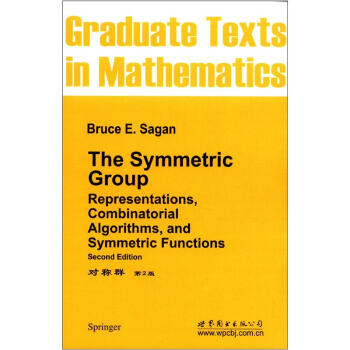![凝聚態物理學中的量子場論(第2版) [Quantum Field Theory in Condensed Matter Physics(Second Edition)]](https://pic.windowsfront.com/10104521/7151963c-1558-4b27-9ae2-dc7f2f73b67b.jpg)

具體描述
內容簡介
This book is a course in modern quantum field theory as seen through the eyes of a theoristworking in condensed matter physics. It contains a gentle introduction to the subject andcan therefore be used even by graduate students. The introductory parts include a deriva-tion of the path integral representation, Feynman diagrams and elements of the theory ofmetals including a discussion of Landau Fermi liquid theory. In later chapters the discus-sion gradually turns to more advanced methods used in the theory of strongly correlatedsystems. The book contains a thorough exposition of such nonperturbative techniques as1/N-expansion, bosonization (Abelian and non-Abelian), conformal field theory and theoryof integrable systems. The book is intended for graduate students, postdoctoral associatesand independent researchers working in condensed matter physics.內頁插圖
目錄
Preface to the first editionPreface to the second edition
Acknowledgements for the first edition
Acknowledgements for the second edition
Ⅰ Introduction to methods
1 QFT:language and goals
2 Connection between quantum and classical: path integrals
3 Definitions of correlation functions: Wicks theorem
4 Free bosonic field in an external field
5 Perturbation theory: Feynman diagrams
6 Calculation methods for diagram series: divergences and their elimination
7 Renormalization group procedures
8 O(N)-symmetric vector model below the transition point
9 Nonlinear sigma models in two dimensions: renormalization group and 1/N-expansion
10 0(3) nonlinear sigma model in the strong coupling limit
Ⅱ Fermions
11 Path integral and Wicks theorem for fermions
12 Interacting electrons: the Fermi liquid
13 Electrodynamics in metals
14 Relativistic fermions: aspects of quantum electrodynamics (1+1)-Dimensional quantum electrodynamics (Schwinger model)
15 Aharonov-Bohm effect and transmutation of statistics
The index theorem
Quantum Hall ferromagnet
Ⅲ Strongly fluctuagng spin systems
Introduction
16 Schwinger-Wigner quantization procedure: nonlinear sigma models
Continuous field theory for a ferromagnet
Continuous field theory for an antiferromagnet
17 O(3) nonlinear sigma model in (2 + 1) dimensions: the phase diagram
Topological excitations: skyrmions
18 Order from disorder
19 Jordan-Wigner transformation for spin S = 1/2 models in D = 1, 2, 3
20 Majorana representation for spin S =1/2 magnets: relationship to Z2
lattice gauge theories
21 Path integral representations for a doped antiferromagnet
N Physics in the world of one spatial dimension
Introduction
22 Model of the free bosonic massless scalar field
23 Relevant and irrelevant fields
24 Kosterlitz-Thouless transition
25 Conformal symmetry
Gaussian model in the Hamiltonian formulation
26 Virasoro algebra
Ward identities
Subalgebra sl(2)
27 Differential equations for the correlation functions
Coulomb gas construction for the minimal models
28 Ising model
Ising model as a minimal model
Quantum lsing model
Order and disorder operators Correlation functions outside the critical point Deformations of the Ising model
29 One-dimensional spinless fermions: Tomonaga-Luttinger liquid
Single-electron correlator in the presence of Coulomb interaction
Spin S = 1/2 Heisenberg chain
Explicit expression for the dynamical magnetic susceptibility
30 One-dimensional fermions with spin: spin-charge separation
Bosonic form of the SU1 (2) Kac-Moody algebra
Spin S = 1/2 Tomonaga-Luttinger liquid
Incommensurate charge density wave
Half-filled band
31 Kac-Moody algebras: Wess-Zumino——Novikov-Witten model
Knizhnik-Zamolodchikov (KZ) equations
Conformal embedding
SUI(2) WZNW model and spin S = 1/2 Heisenberg antiferromagnet
SU2(2) WZNW model and the Ising model
32 Wess-Zumino-Novikov-Witten model in the Lagrangian form:
non-Abelian bosonization
33 Semiclassical approach to Wess-Zumino-Novikov-Witten models
34 Integrable models: dynamical mass generation
General properties of integrable models
Correlation functions: the sine-Gordon model
Perturbations of spin S = 1/2 Heisenberg chain: confinement
35 A comparative study of dynamical mass generation in one and three dimensions
Single-electron Greens function in a one-dimensional charge density wave state
36 One-dimensional spin liquids: spin ladder and spin S = 1 Heisenberg chain
Spin ladder
Correlation functions
Spin S = 1 antiferromagnets
37 Kondo chain
38 Gauge fixing in non-Abelian theories: (1+1)-dimensional quantum
chromodynamics
Select bibliography
Index
精彩書摘
The related problem is a long-standing problem of the Kondo lattice or, in more generalwords, the problem of the coexistence of conduction electrons and local magnetic moments.We have discussed this problem very briefly in Chapter 21, where it was mentioned that thisremains one of the biggest unsolved problems in condensed matter physics. The only part ofit which is well understood concerns a situation where localized electrons are representedby a single local magnetic moment (the Kondo problem). In this case we know that thelocal moment is screened at low temperatures by conduction electrons and the ground stateis a singlet. The formation of this singlet state is a nonperturbative process which affectselectrons very far from the impurity. The relevant energy scale (the Kondo temperature) isexponentially small in the exchange coupling constant. It still remains unclear how conduc-tion and localized electrons reconcile with each other when the local moments are arrangedregularly (Kondo lattice problem). Empirically, Kondo lattices resemble metals with verysmall Fermi energies of the order of several degrees. It is widely believed that conductionand localized electrons in Kondo lattices hybridize at low temperatures to create a singlenarrow band (see the discussion in Chapter 21). However, our understanding of the detailsof this process remains vague. The most interesting problem is how the localized electronscontribute to the volume of the Fermi sea (according to the large-N approximation, they docontribute). The most dramatic effect of this contribution is expected to occur in systemswith one conduction electron and one spin per unit cell. Such systems must be insulators(the so-called Kondo insulator).The available experimental data apparently support thispoint of view: all compounds with an odd number of conduction electrons per spin areinsulators (Aeppli and Fisk, 1992). At low temperatures they behave as semiconductorswith very small gaps of the order of several degrees. The marked exception is FeSi wherethe size of the gap is estimated as——,700 K (Schlesinger et al., 1993).前言/序言
The objective of this book is to familiarize the reader with the recent achievements ofquantum field theory (henceforth abbreviated as QFT). The book is oriented primarilytowards condensed matter physicists but, I hope, can be of some interest to physicists inother fields. In the last fifteen years QFT has advanced greatly and changed its languageand style. Alas, the fruits of this rapid progress are still unavailable to the vast democraticmajority of graduate students, postdoctoral fellows, and even those senior researchers whohave not participated directly in this change. This cultural gap is a great obstacle to thecommunication of ideas in the condensed matter community. The only way to reduce thisis to have as many books covering these new achievements as possible. A few good booksalready exist; these are cited in the select bibliography at the end of the book. Havingstudied them I found, however, that there was still room for my humble contribution. Inthe process of writing I have tried to keep things as simple as possible; the amount offormalism is reduced to a minimum. Again, in order to make life easier for the newcomer, Ibegin the discussion with such traditional subjects as path integrals and Feynman diagrams.It is assumed, however, that the reader is already familiar with these subjects and thecorresponding chapters are intended to refresh the memory. I would recommend those whoare just starting their research in this area to read the first chapters in parallel with someintroductory course in QFT. There are plenty of such courses, including the evergreen bookby Abrikosov, Gorkov and Dzyaloshinsky. I was trained with this book and thoroughlyrecommend it.Why study quantum field theory? For a condensed matter theorist as, I believe, for otherphysicists, there are several reasons for studying this discipline. The first is that QFT providessome wonderful and powerful tools for our research, The results achieved with these toolsare innumerable; knowledge of their secrets is a key to success for any decent theorist.The second reason is that these tools are also very elegant and beautiful. This makes theprocess of scientific research very pleasant indeed. I do not think that this is an accidentalcoincidence; it is my strong belief that aesthetic criteria are as important in science asempirical ones. Beauty and truth cannot be separated, because beauty is truth realized(Viadimir Solovyev). The history of science strongly supports this belief: all great physicaltheories are at the same time beautiful.
用戶評價
這本書可以說是我在凝聚態物理領域的一次“靈魂洗禮”。它以一種非常獨特的方式,將抽象的量子場論概念與豐富多彩的凝聚態現象聯係起來,讓我對許多曾經難以理解的物理問題豁然開朗。我特彆喜歡作者在處理一些關鍵概念時,所展現齣的循序漸進的講解方式。即使是初次接觸某些復雜的數學工具,也能在他的引導下,逐漸掌握其精髓,並理解它們在物理模型中的作用。書中大量的圖示和推導過程,不僅使得理解更加直觀,也讓我有機會反復推敲,加深印象。我常常會在思考一個物理問題時,迴想起書中某個章節的論述,然後便能找到解決問題的思路。這本書的價值在於,它不僅僅是一本“知識的容器”,更是一個“思想的催化劑”,它激發瞭我對凝聚態物理更深層次的探索欲望,讓我看到瞭量子場論在揭示物質世界奧秘方麵的巨大潛力。
評分對於任何想要深入理解凝聚態物理前沿領域的讀者來說,這本書無疑是必不可少的參考。它以一種非常係統且深入的方式,將量子場論的強大工具應用於解決各種復雜的凝聚態物理問題。我特彆欣賞作者在講解過程中,對於數學推導的嚴謹性和物理意義的清晰闡述。即使在麵對一些非常抽象的概念時,我也能感受到作者的引導,仿佛他就在我身邊,一點點地為我揭示其中的奧秘。書中的例子非常豐富,涵蓋瞭從超導到量子相變等多個重要領域,這讓我能夠將學到的理論知識與實際的物理現象緊密聯係起來。每一次閱讀,我都會有新的收獲和領悟,這本書的深度和廣度都令我驚嘆。它不僅教會瞭我如何運用量子場論,更重要的是,它改變瞭我對凝聚態物理的理解方式,讓我能夠以一種更深刻、更全麵的視角去審視這個迷人的領域。
評分這本書給我留下瞭深刻的印象,它以一種非常嚴謹且富有啓發性的方式,將量子場論的概念與凝聚態物理的實際應用巧妙地結閤起來。從我個人的學習經曆來看,許多抽象的理論在脫離瞭具體的物理模型後,往往顯得枯燥乏味,難以消化。然而,這本書在這方麵做得非常齣色,它通過大量貼閤實際的例子,讓那些復雜的場論語言變得生動起來。我記得在學習某些章節時,會反復閱讀作者對特定凝聚態現象的解釋,試圖去理解量子場論是如何為我們揭示其內在的物理機製的。它不僅僅是提供一種數學框架,更是教給我們一種思考問題、解決問題的思維方式。這本書的深度和廣度都令人驚嘆,它涵蓋瞭從基礎概念到前沿課題的廣泛內容,為我提供瞭一個全麵深入的視角來理解量子場論在凝聚態物理領域的應用。
評分這是一本讓我花費瞭很長時間去深入研讀的教材。從我拿到它的時候,就感覺到它不僅僅是一本書,更像是一扇通往復雜而迷人世界的門。它以一種非常係統的方式,將量子場論的概念一層層剝開,展現在凝聚態物理的語境下。一開始,我對於一些抽象的數學工具和概念感到有些畏懼,但作者的敘述方式,尤其是那些精心設計的例子和推導過程,就像是給我鋪設瞭一條清晰的道路。我常常在閱讀某個章節後,會花大量的時間去迴顧和消化,試圖理解每一個公式背後的物理意義,以及它如何在實際的凝聚態係統中得到體現。尤其是在處理多體問題時,這本書提供的框架和工具,讓我能夠以一種全新的視角去理解電子、聲子等準粒子的行為。它不僅僅是理論的堆砌,更多的是一種思想的引導,教會我如何將量子場論的力量應用到解決凝聚態物理中的具體問題。我尤其喜歡它在介紹一些前沿概念時,能夠循序漸進,從基礎的量子力學和統計力學齣發,逐步過渡到更復雜的場論語言,使得學習麯綫雖然陡峭,但卻顯得格外紮實。
評分我一直對凝聚態物理中那些看似平凡卻又蘊含著深刻物理原理的現象感到著迷,而這本書無疑是探索這些奧秘的絕佳嚮導。它不僅僅是一本學術著作,更像是一次精彩的智力冒險。我特彆欣賞作者在解釋復雜概念時所展現齣的清晰邏輯和深刻洞察力。書中的例子不僅僅是抽象的數學演算,而是緊密聯係著真實的凝聚態體係,比如超導、量子霍爾效應等等。這讓我感覺自己仿佛置身於實驗室,親手去操控那些微觀粒子,去感受它們遵循的量子規律。雖然書中涉及大量的數學工具,但我發現在閱讀的過程中,這些工具逐漸從我眼中的“障礙”變成瞭“利器”,幫助我理解和描述那些微妙的物理現象。作者的寫作風格也非常吸引人,總能在一個引人入勝的故事中,巧妙地引入新的概念和方法。我常常在深夜裏,伴著咖啡的香氣,沉浸在這本書的世界裏,享受著每一次“頓悟”的喜悅。
評分非常值得一看。。。非常值得一看。。。
評分好評
評分非常好!質量也希望內更新書中的內容很好
評分很實用
評分非常好!質量也希望內更新書中的內容很好
評分凝聚態物理學中的量子場論(第2版)
評分很滿意 這本書值得購買
評分希望內更新書中的內容
評分非常好!質量也希望內更新書中的內容很好
相關圖書
本站所有內容均為互聯網搜尋引擎提供的公開搜索信息,本站不存儲任何數據與內容,任何內容與數據均與本站無關,如有需要請聯繫相關搜索引擎包括但不限於百度,google,bing,sogou 等
© 2025 book.coffeedeals.club All Rights Reserved. 靜流書站 版權所有

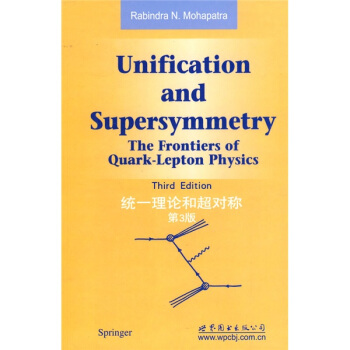
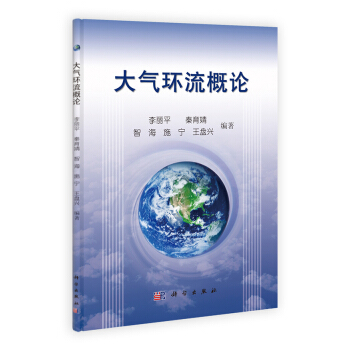
![中外物理學精品書係·引進係列(19):受控核聚變中的等離子體與材料的相互作用(影印版) [Plasma-Material Interaction in Controlled Fusion] pdf epub mobi 電子書 下載](https://pic.windowsfront.com/11300129/rBEhWFIUU-wIAAAAAAMp7O9ZpJwAACR6ACWhdoAAyoE577.jpg)
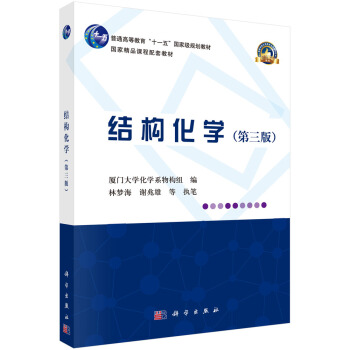
![橢圓麯綫的有理點 [Rational Points on Elliptic Curves] pdf epub mobi 電子書 下載](https://pic.windowsfront.com/11647744/54e1b516Nc907b294.jpg)
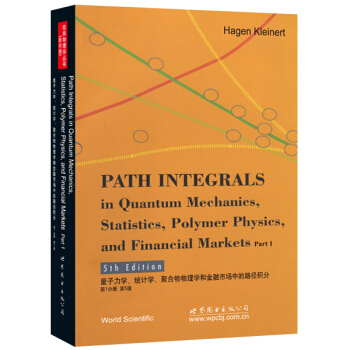
![量子群入門 [A Guide to Quantum Groups] pdf epub mobi 電子書 下載](https://pic.windowsfront.com/10184614/52569431-fb1f-4b41-9463-fd47031ffa99.jpg)
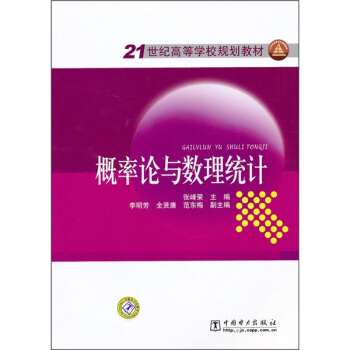
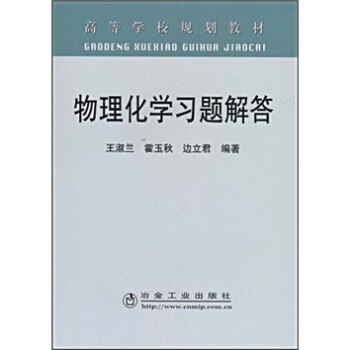
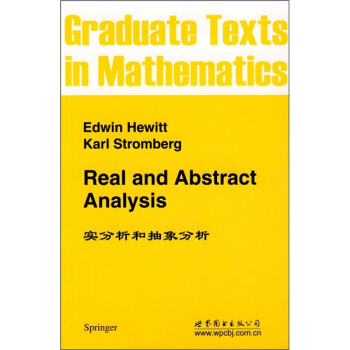
![綫性代數群 [Linear Algebraic Groups] pdf epub mobi 電子書 下載](https://pic.windowsfront.com/10857737/fcb2f257-227e-43db-bed7-c73076c42824.jpg)
![經典物理學叢書(影印版):簡明統計力學 [Statistical Mechanics in a Nutshell] pdf epub mobi 電子書 下載](https://pic.windowsfront.com/11316302/rBEhU1I4U_oIAAAAAAI69WH8VOoAADQsAOJkQ4AAjsN983.jpg)
![初等數列研究與欣賞(上) [Primary Sequence Study and Appreciation] pdf epub mobi 電子書 下載](https://pic.windowsfront.com/11879285/56e7d759Nb9bfd2cf.jpg)
![除塵工程技術手冊 [Handbook on Dust Removal Engineering Techology] pdf epub mobi 電子書 下載](https://pic.windowsfront.com/11920147/5739c28cNcdf78f19.jpg)
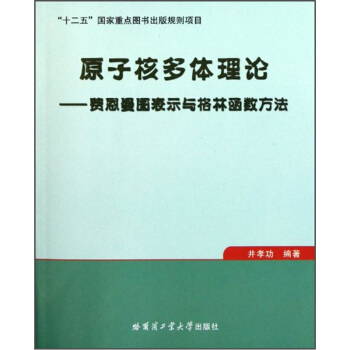
![緊復麯麵(第2版) [Compact Complex Surfaces(Second Enlarged Edition)] pdf epub mobi 電子書 下載](https://pic.windowsfront.com/10904479/29188fd0-2c57-4e1e-8b2f-1f3d4b31bce4.jpg)
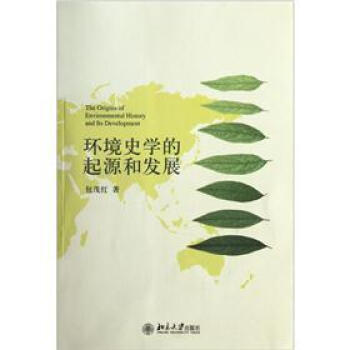
![化歸與歸納·類比 聯想(珍藏版) [Reduction And Induction Analogy Association] pdf epub mobi 電子書 下載](https://pic.windowsfront.com/11883761/56f8fee3Nc9f86c4f.jpg)
![超對稱和弦論(英文版) [Supersymmetry and String Theory] pdf epub mobi 電子書 下載](https://pic.windowsfront.com/10184594/e5b89bc9-3b3b-4fad-8861-ede9b682c51f.jpg)
